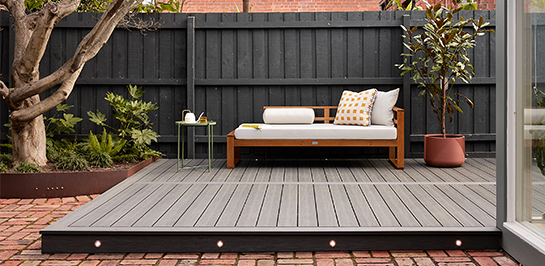4 Common Misconceptions with Ekodeck
Ekodeck is synonymous with composite decking, but not all composite decking is Ekodeck.
Despite over a decade of proven performance in the Australian climate, Ekodeck is still often mixed up and mistaken for early generations of composite decking, which was plagued with issues and failures.
This article highlights the most common misconceptions people associate with Ekodeck – let’s see what that’s all about!
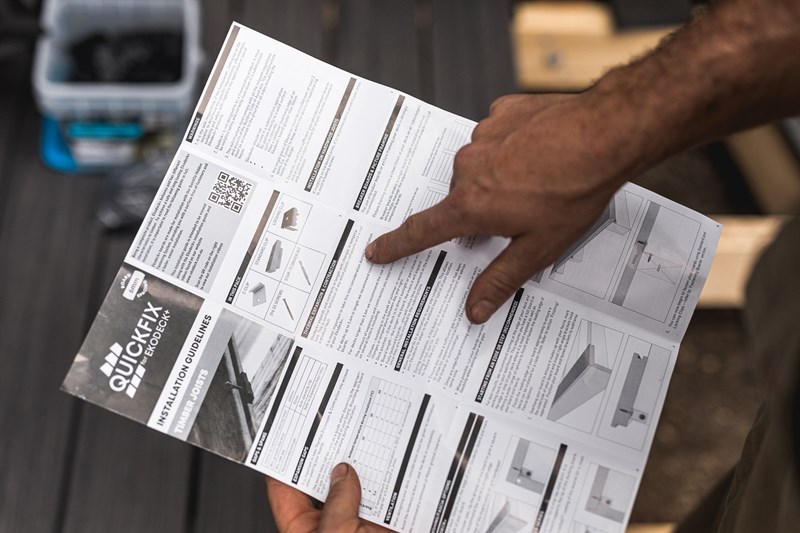
Myth #1 – It shrinks
The most common misconception is that Ekodeck shrinks.
Let’s put this to bed right now – Ekodeck does not shrink! It expands and contracts under temperature. This is the nature of all composites.
Understanding the behaviour of Ekodeck is critical to achieving a great installation, so let’s explore what’s happening here and how best to control it.
Composite decking expands and contracts along its length with changes in temperature – as it heats up, it will expand. As it cools down, it contracts.
Expansion and contraction are common in almost all building materials:
- Timber swells and shrinks in its width.
- Steel, aluminium or even glass will have some movement between a cool brisk morning and a stinking hot day in full sun.
- Even internal flooring has gapping requirements around walls and under architraves.
Ekodeck is no different.
Hot Tip: Here is the biggest tip to get the best possible finish: Be wary when installing on hot days. If the board is hot, it is in an expanded state. If you leave a gap when the board is in its expanded state that gap will only get bigger when the board contracts as it cools. This is something to watch out for regardless of the season, but especially during times when the days are hot and the nights are cool.
When installing Ekodeck, people often leave a 6mm gap at the end of the boards – the same size as the clip space between the boards. As the boards are hot, they are at full expansion, so this 6mm end gap is only going to get larger when the boards contract. As the boards cool down, they contract along their length, which results in this 6mm end gap increasing to close to 10mm! This is where the claim that Ekodeck shrinks stems from.
Instead of leaving a gap at the end of the boards, the correct method of installation should see the end gaps of the boards butted up tight when the boards are warm and expanded. This will mean that as the boards cool and contract, the end gap will only open to 3-4mm, which is more than acceptable.
It is only necessary to leave a gap at the end of your decking boards on a cool day, to allow some room for the boards to expand on a hot day. Be sure to consult our handy expansion gap table, which advises what gap to leave when installing your Ekodeck boards.
Myth #2 – It fades
Early generation wood-plastic composite boards have been known to fade (and unfortunately some brands still available on the market). This has tainted (too many) people’s perception of composite decking, making people assume that all composite decking might look great initially, but asking the question: what will happen in years to come?
Rest assured, Ekodeck has been installed across Australia since 2009 with a proven track record of performance. Never have we had any complaints, or needed to replace any boards due to fading.
Our specialised UV-stable formula is colour-fast and ensures your decking looks great for its entire lifetime.
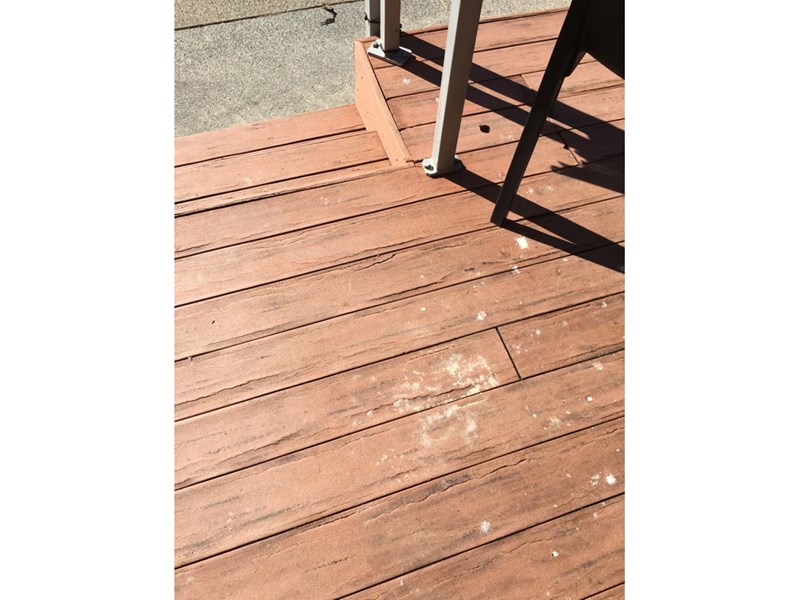
Image above of competitor’s board taken from Product Review website.
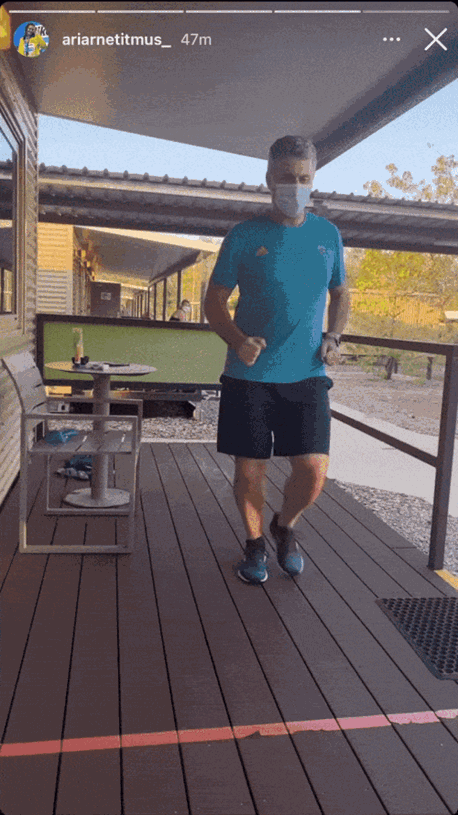
The above video shows Ekodeck Classic boards installed at Howard Springs Quarantine facility, Northern Territory – video taken by olympian Ariarne Titmus in 2021. Decking installed in 2012. Looks great for almost a decade old in the centre of Australia!
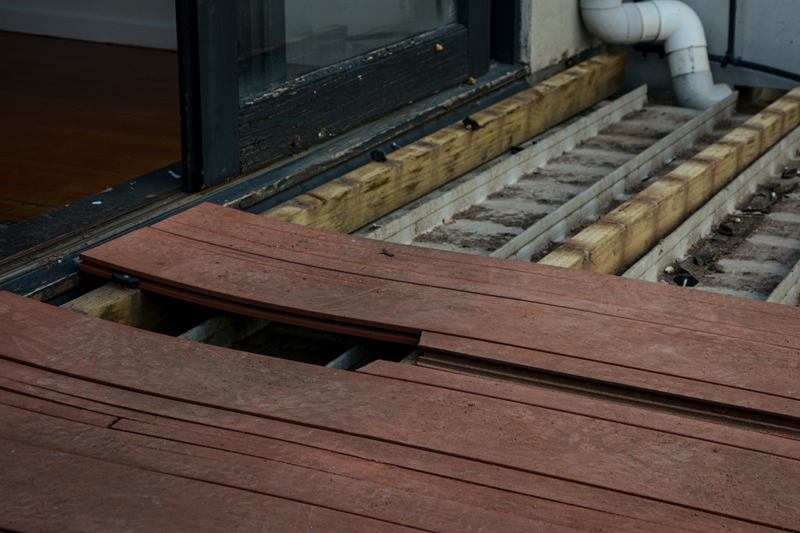
Myth #3 – It sags between joists
Another common issue with hollow-core composite boards is sagging between joists and poor load limitations.
Hollow-core boards are made as a cost-saving technique, but as history shows, it is at the expense of structural integrity, performance and in some cases safety and compliance.
Here at Ekodeck, we decided right from the get-go to only manufacture solid-core, quality composite decking boards. If you have or have seen a hollow-core board, it isn’t Ekodeck – because we’ve never made a hollow-core board. We do not recommend them and highly advise not to consider a hollow-cored composite board.
Hot Tip: When selecting between composite decking boards, be sure to note the recommended span the board is rated to – most often it won’t reach the 450mm standard.
All Ekodeck boards are structurally compliant with Australia and New Zealand design requirements. Check out the full span and loading limitations depending on your application in our Technical Specifications.
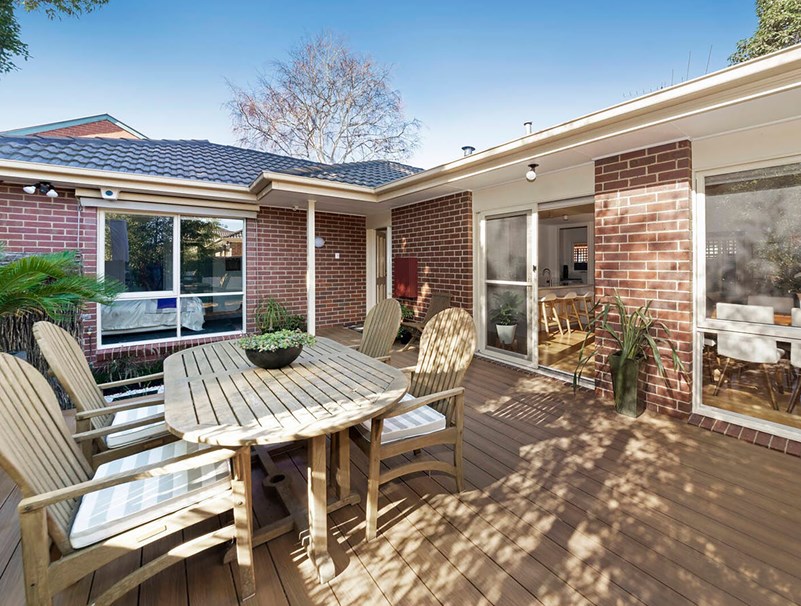
Myth #4 – It’s made of plastic
Kind of, but not really. Ekodeck is made from recycled plastics and that’s only the half of it. The other half is made up of approximately 45% reclaimed timber.
So, there you have it, some clarification about Ekodeck and the most common misconceptions about the product.
Want to know more?
If you have any questions or queries about Ekodeck, want to know more or need some clarification or recommendations, feel free to get in touch any time via our email [email protected] or give us a call on (03) 9639 7774. We’ll be sure to assist you the best we can.
You may also like

Get started with Ekodeck
Experience our entire colour range for yourself. We deliver a sample kit complete with each colour direct to your door.
